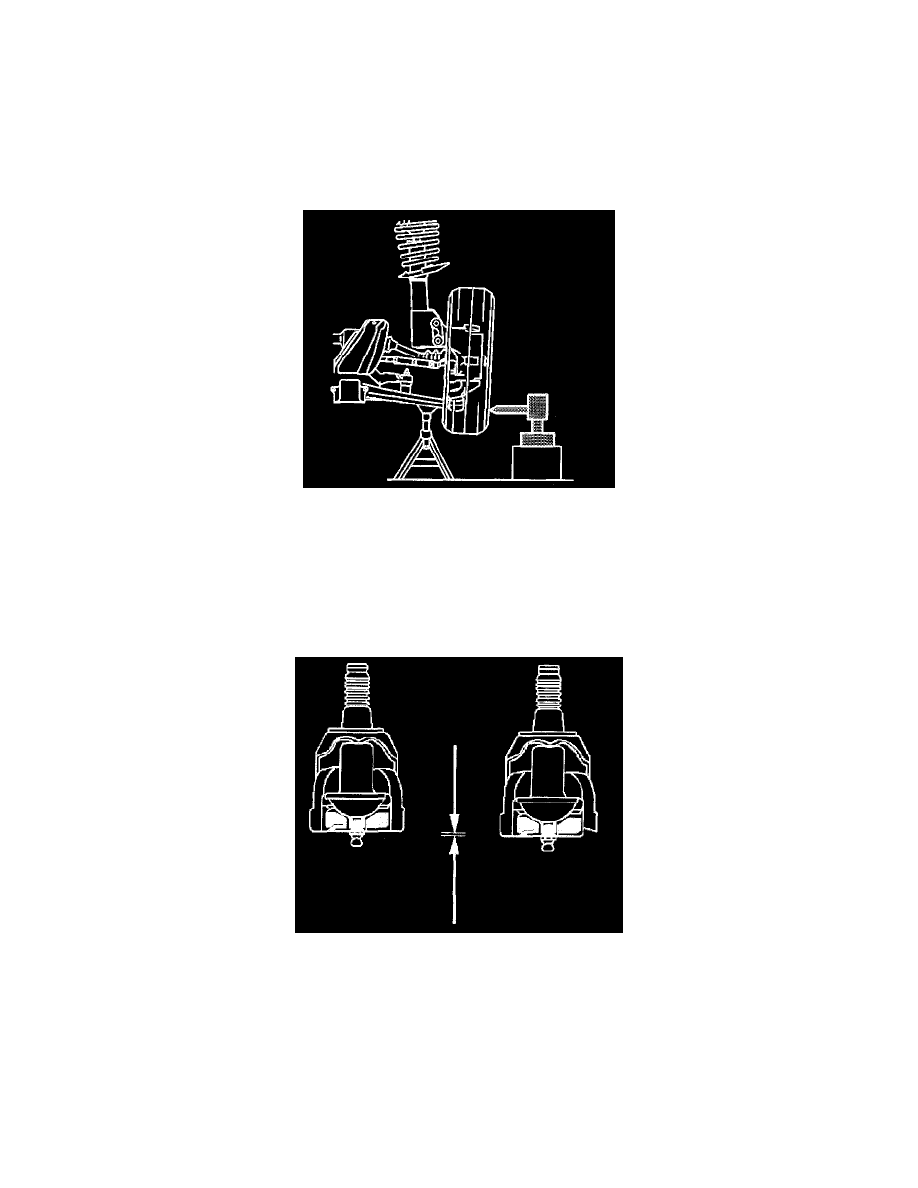DeVille DTS V8-4.6L VIN 9 (2002)

Ball Joint: Testing and Inspection
Ball Joint Inspection
^
Tools Required
-
J 8001 Dial Indicator
Important:
^
The vehicle must rest on a level surface.
^
The vehicle must be stable. Do not rock the vehicle on the jack stands.
1. Raise and support the vehicle with safety stands.
2. Support the lower control arm with a jack stand, as far outboard as possible, near the lower ball joint.
3. Wipe the ball joint clean. Check the seals for cuts or tears.
Important: If a seal is cut or torn, replace the lower control arm.
4. Check the wheel bearings for looseness. If looseness in the wheel bearings is present, refer to Wheel Bearings Diagnosis. See: Wheel
Bearing/Testing and Inspection
5. Check the ball joint for horizontal looseness.
5.1.
Position the J 8001 against the lowest outboard point on the wheel rim.
5.2.
Rock the wheel in and out while reading the J 8001. This shows horizontal looseness in the lower ball joint.
5.3.
The J 8001 reading should be no more than 3.18 mm (0.125 inch). If the reading is too high, check the lower ball joint for vertical
looseness.
6. Check the lower ball joint for wear and for vertical looseness using the following procedure:
6.1.
Inspect by sight the lower ball joint for wear. The position of the housing into which the grease fitting is threaded indicates wear. This
round housing projects 1.27 mm (0.050 inch) beyond the surface of the lower ball joint cover on a new ball joint. Under normal wear, the
surface of the lower ball joint housing retreats inward very slowly.
6.2.
First observe, then scrape a scale, a screwdriver, or a fingernail across the cover. If the round housing is flush with or inside of the cover
surface, replace the lower control arm.
